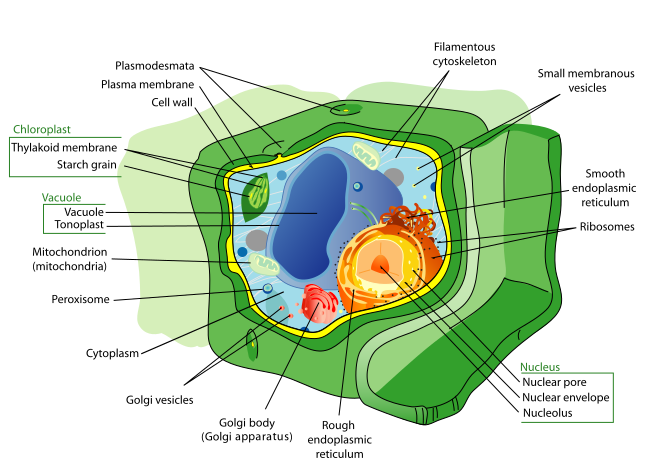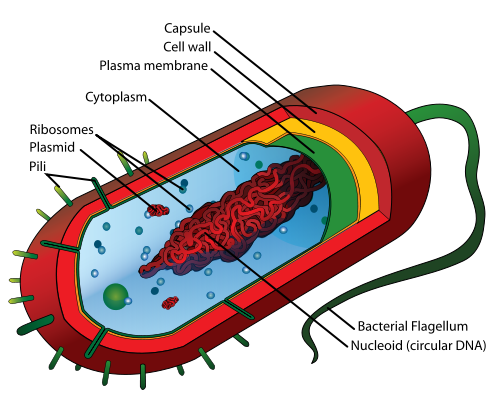1.1 Eukaryote cells
Plants have eukaryote cells. Compared to prokaryote cells, eukaryote cells such as plant cells are larger and they have organelles. They have their DNA contained in a nucleus and photosynthesis occurs in chloroplasts.
Like plant cells, animal cells are also eukaryote cells. Unlike animal cells, plant cells have a cell wall that surrounds the outside of the cell membrane. The cell wall is made of cellulose but may be thickened and strengthened with materials such as lignin in some cells.

A eukaryotic plant cell differs considerably from a prokaryotic cell of a bacteria or archaea. These are much simpler and smaller. Their DNA is found in a single chromosome and is not bound by a membrane. Similarly photosynthetic cyanobacteria do not have chloroplasts but rather photosynthesis occurs within the general cavity of the cell.

Media Attributions
- Figure 1.1. Features of a typical plant cell © Mariana Ruiz Villarreal is licensed under a CC0 (Creative Commons Zero) license
- Figure 1.2. A diagram of a prokaryotic cell © Mariana Ruiz Villarreal is licensed under a CC0 (Creative Commons Zero) license

